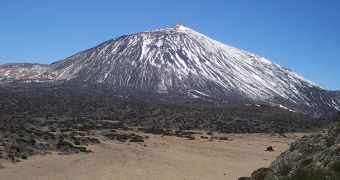In a paper published in the October issue of the journal Geology, investigators announce the discovery of a massive landslide that occurred in the Canary Islands, Spain, in ancient times. Details of the catastrophe have remained perfectly preserved in the geological record.
Scientists with the American Geophysical Union (AGU) believe that the landslide itself was caused by a tremendously-powerful volcanic eruption that affected the entire area. Because of this, the team was able to identify when the event occurred with a great degree of certainty.
“Harris et al. 2011 report a very interesting find on the island of Tenerife, one of the Canary Islands. This is the remains of an ancient collapse event on the south-eastern part of Cañadas volcano,” a post on the USGS Landslide Blog reports.
“The landslide deposit, which is up to 50 meters [164 feet] thick, has been mapped across a large area – 90 square kilometers [34.7 square miles] – and this is just the onshore component of the mass, which may extend another 50 kilometer [31 miles] offshore,” the post adds.
According to investigators, the ancient volcanic eruption was so powerful that it led to the collapse of the entire southeast slope of Tenerife, the most important island in the Canaries. The natural disaster took place around 733,000 years ago, Our Amazing Planet reports.
It would appear that as the mountain was erupting, a dome made entirely out of lava pushed on a side of the volcano from within, eventually breaching the mountain's wall and triggering the impressive landslide. The latter reached the ocean shorelines about 10.5 miles (17 kilometers) away.
But the waters could not stop the progression of the fast-moving land, so the slide went on for some distance on the ocean floor as well. Analyzing the submerged remnants is very difficult, which is why not many researchers have done it until now .
“Fieldwork at 4 km [2.5 mile] water depth remains difficult, even if you are really good at holding your breath,” says that author of the Landslide Blog post, Dave Petley. He holds an appointment as the Wilson Professor of Hazard and Risk at the Durham University Department of Geography.
By studying the preserved remnants of the landslide, geologists will be able to get a better view into the dynamics governing such large ground movements. Some time ago, physicists discovered that sand and rocks tend to behave like a fluid during landslides and similar events.
“It is one of the world's best-preserved accessible examples of such an awesome phenomenon, because the debris from such landslides mostly spreads far across the deep ocean floor, inaccessible for close study,” University of Leicester expert and study team member Mike Branney concludes.

 14 DAY TRIAL //
14 DAY TRIAL //